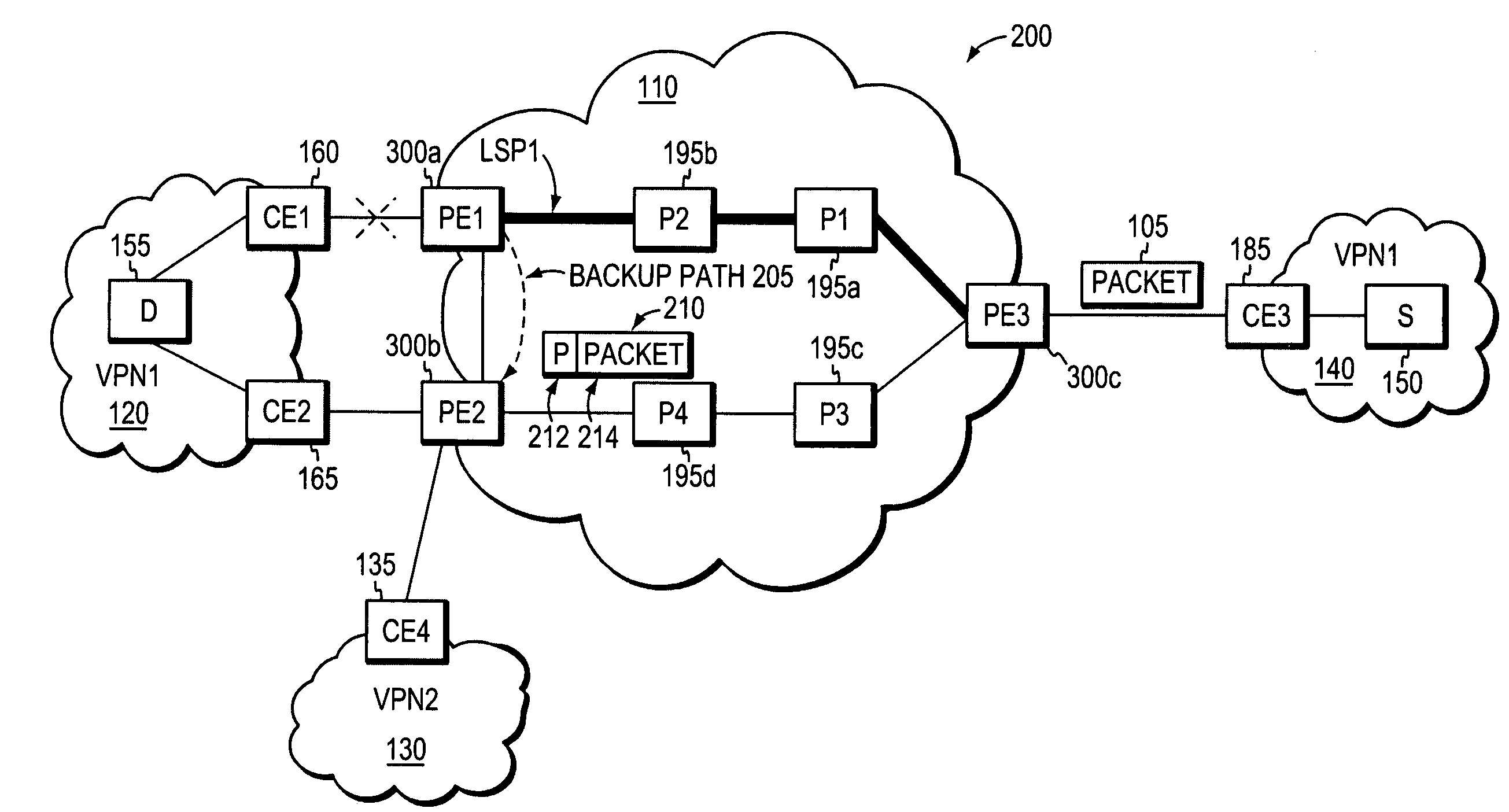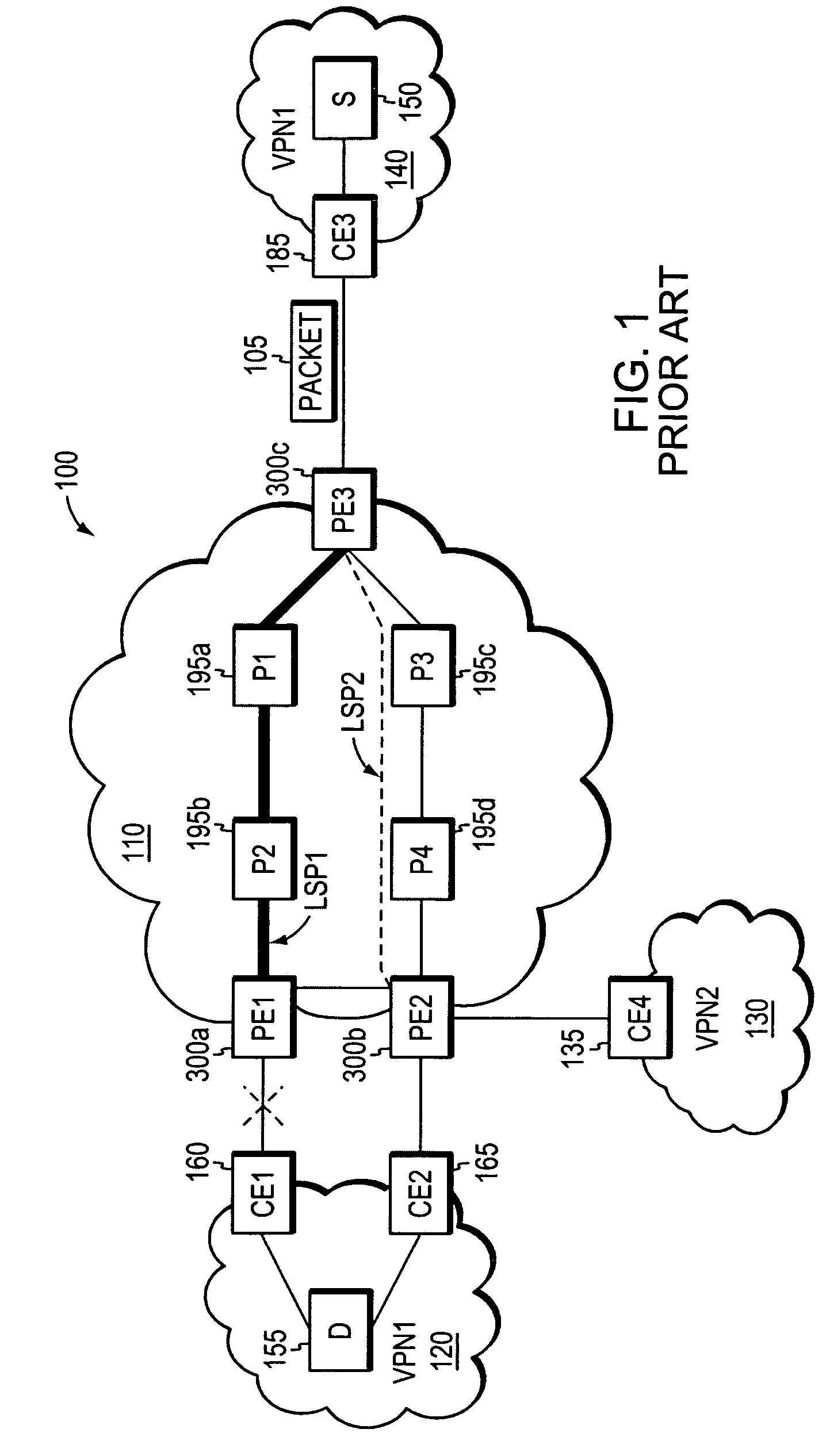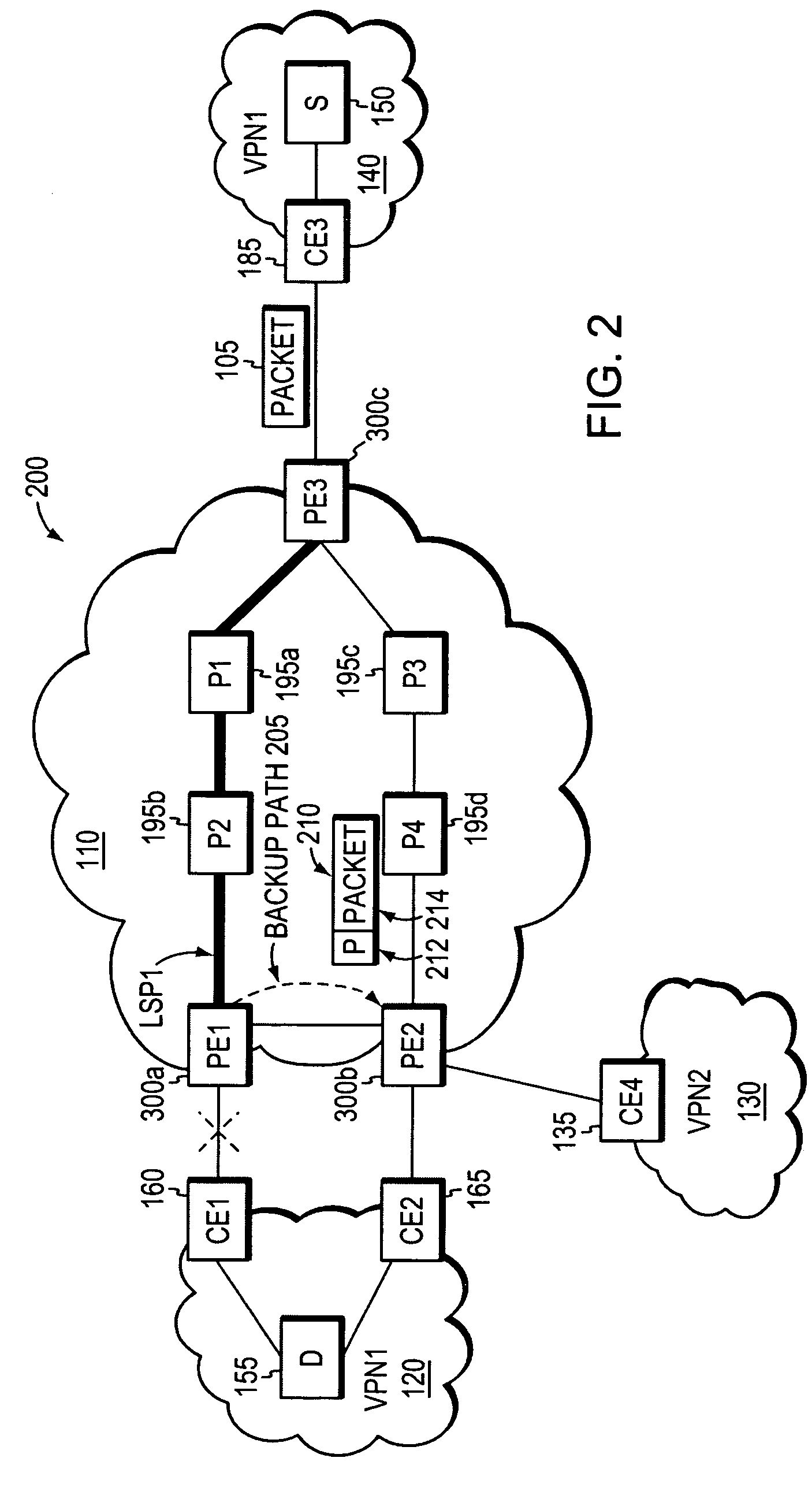Fast reroute (FRR) protection at the edge of a RFC 2547 network
a technology of rfc 2547 and edge protection, applied in the field of data routing, can solve the problem that the second edge device is not allowed to reroute the received packets a second time, and achieve the effect of quick and efficient forwarded
- Summary
- Abstract
- Description
- Claims
- Application Information
AI Technical Summary
Benefits of technology
Problems solved by technology
Method used
Image
Examples
Embodiment Construction
[0040]In accordance with the illustrative embodiments, if an edge device detects a node or link failure that prevents it from communicating with devices in a neighboring domain, the edge device reroutes at least some data packets addressed to the neighboring domain to a backup edge device. The rerouted packets are preferably “tunneled” to the backup edge device, e.g., using an IP or MPLS tunneling mechanism. After receiving the re-routed packets, the backup edge device forwards the packets to the neighboring domain. Notably, the backup edge device is not permitted to reroute the received packets a second time, e.g., upon identifying another inter-domain node or link failure. As such, packet loops are avoided at the edge of the network.
[0041]FIG. 2 illustrates a computer network 200 employing an illustrative embodiment of the invention. For ease of explanation, the network topology of network 200 is the same as that shown in FIG. 1. However, unlike in the network 100, the provider ed...
PUM
 Login to View More
Login to View More Abstract
Description
Claims
Application Information
 Login to View More
Login to View More - R&D
- Intellectual Property
- Life Sciences
- Materials
- Tech Scout
- Unparalleled Data Quality
- Higher Quality Content
- 60% Fewer Hallucinations
Browse by: Latest US Patents, China's latest patents, Technical Efficacy Thesaurus, Application Domain, Technology Topic, Popular Technical Reports.
© 2025 PatSnap. All rights reserved.Legal|Privacy policy|Modern Slavery Act Transparency Statement|Sitemap|About US| Contact US: help@patsnap.com



